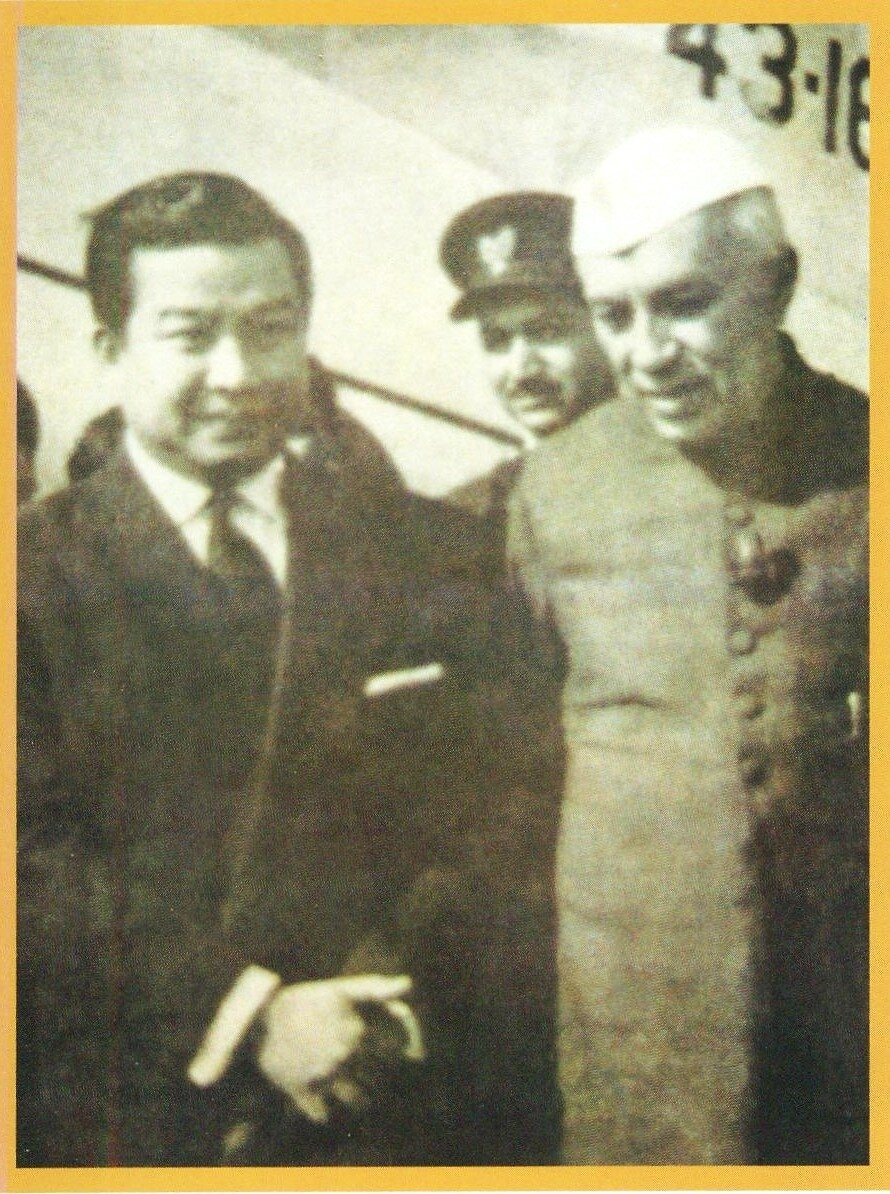Indian Prime Minister J.L. Nehru visit to Cambodia, October 1954 [and related photos]
by Angkor Database
The 1954 historic diplomatic tour by a a photogenic leader, Pandit Nehru.
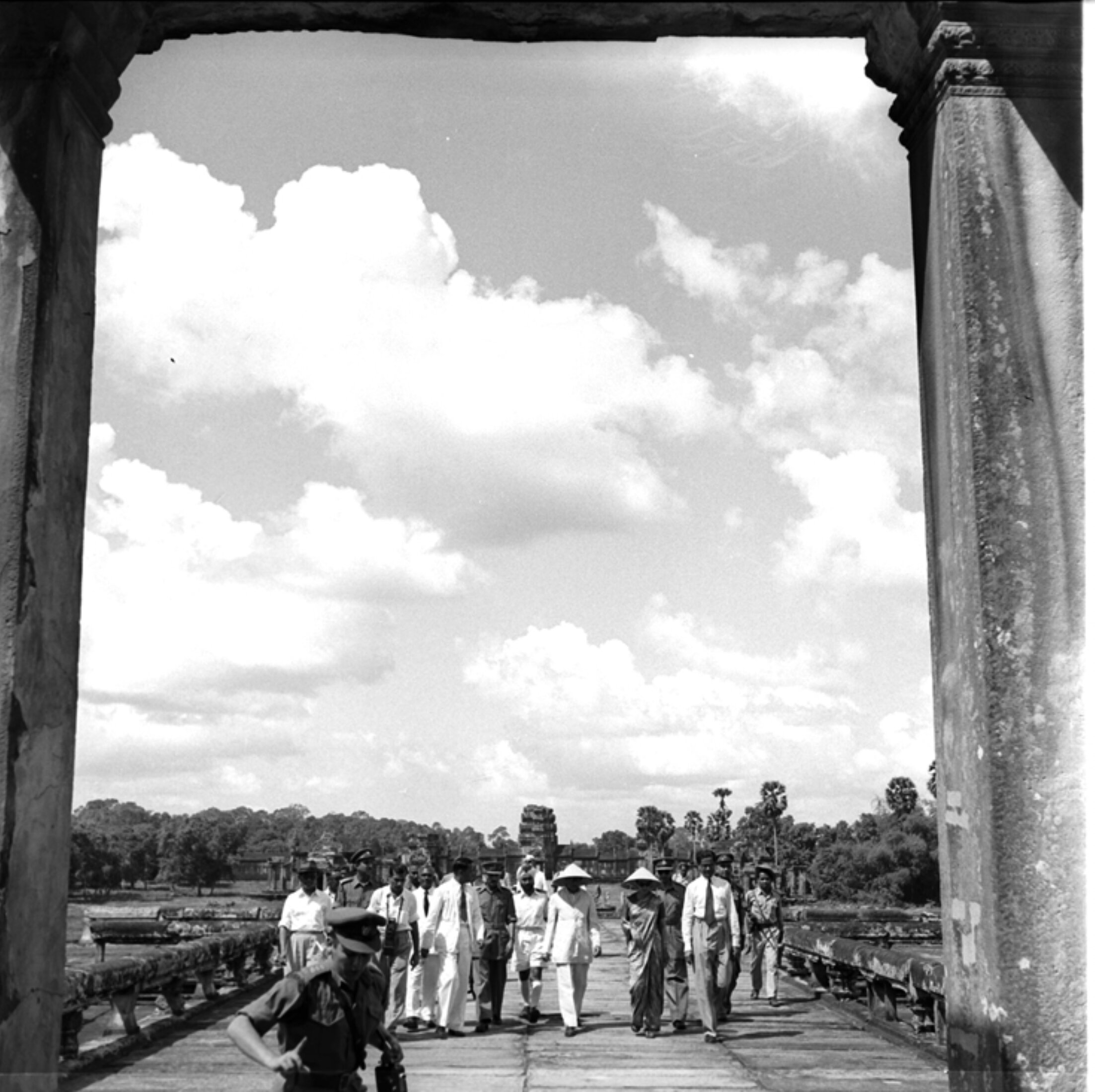

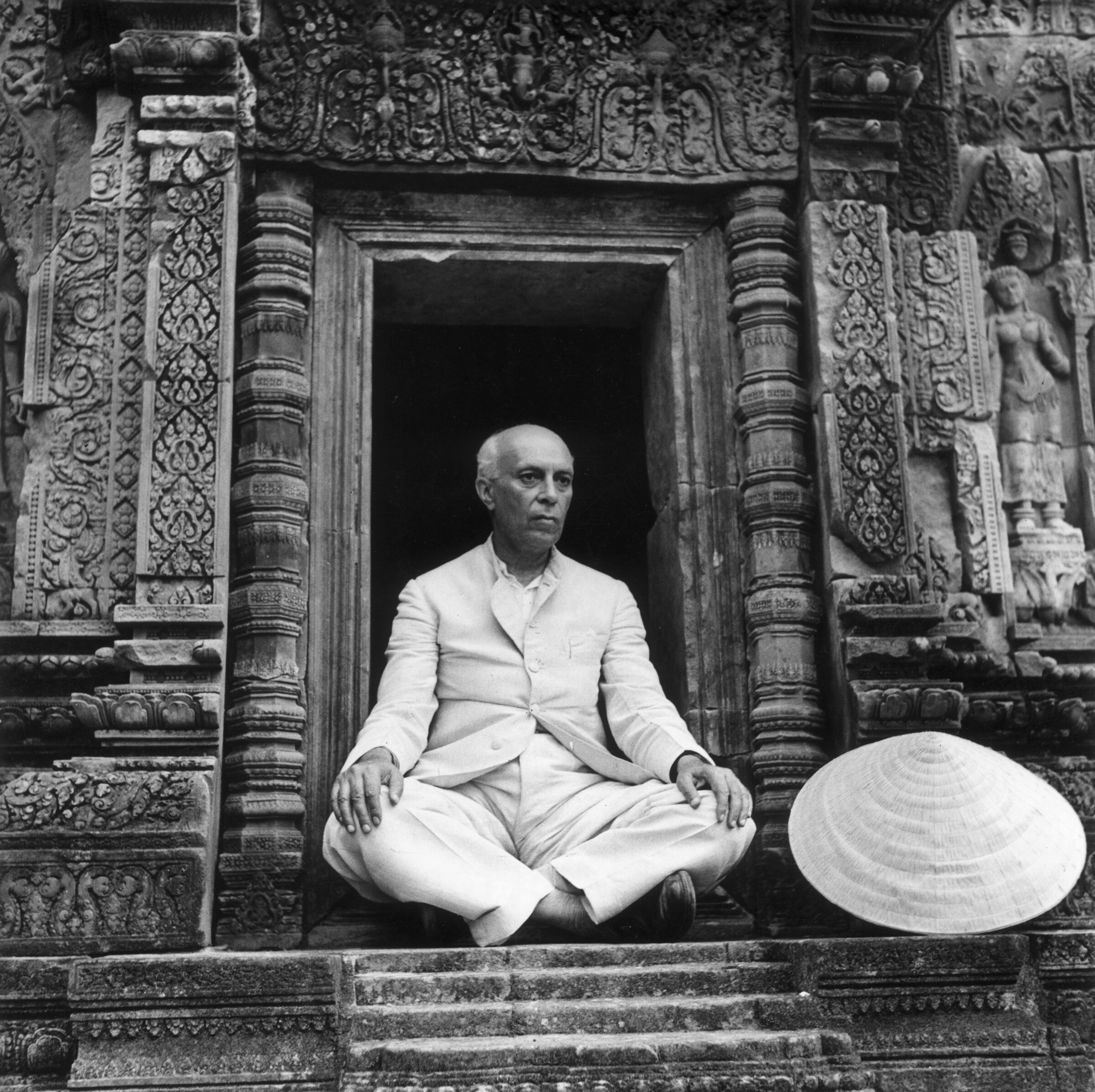

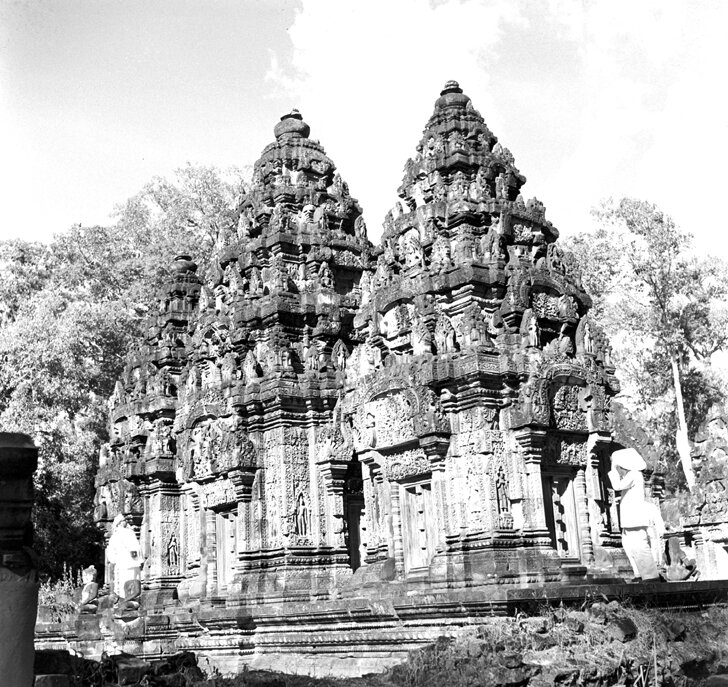





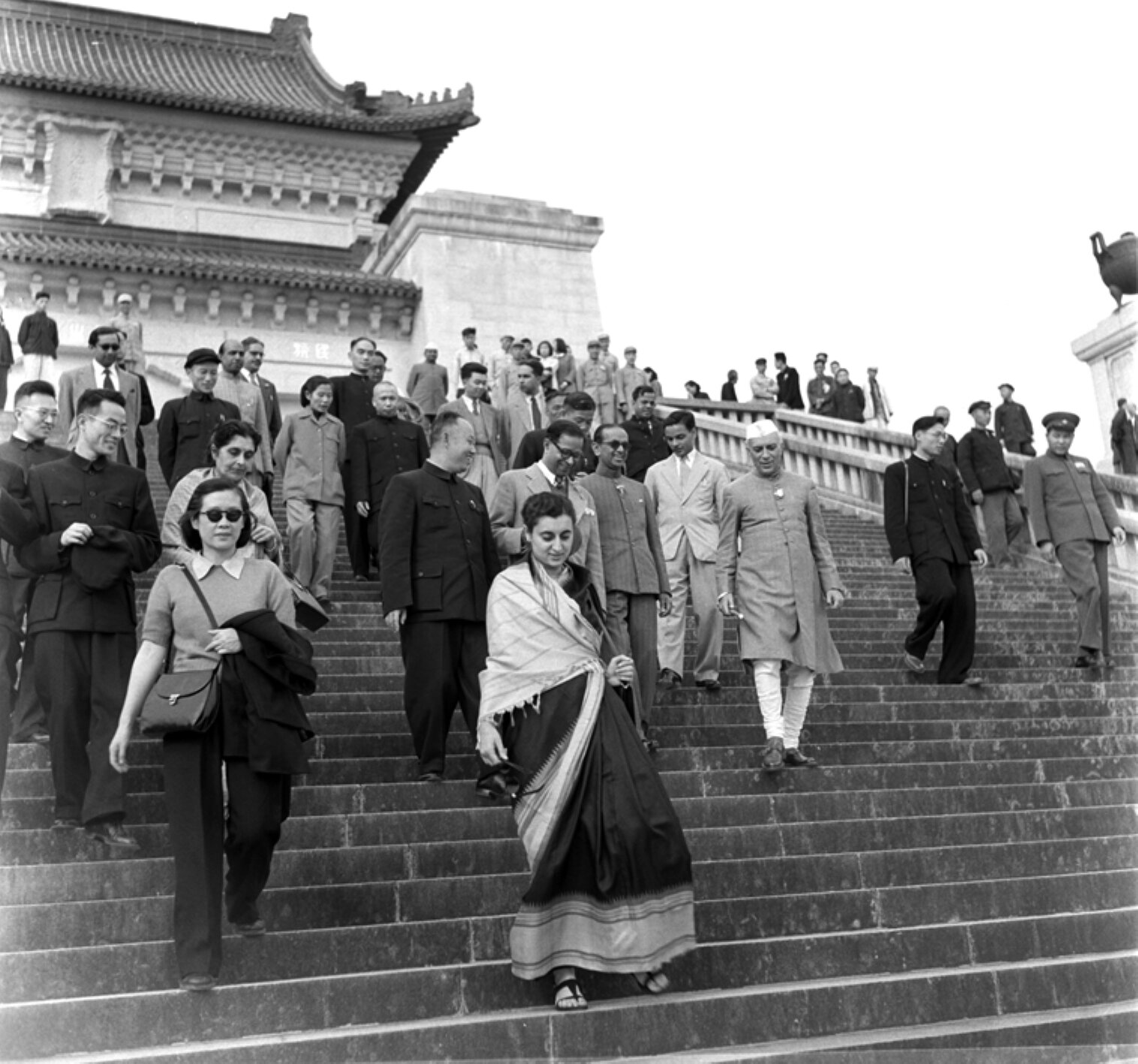






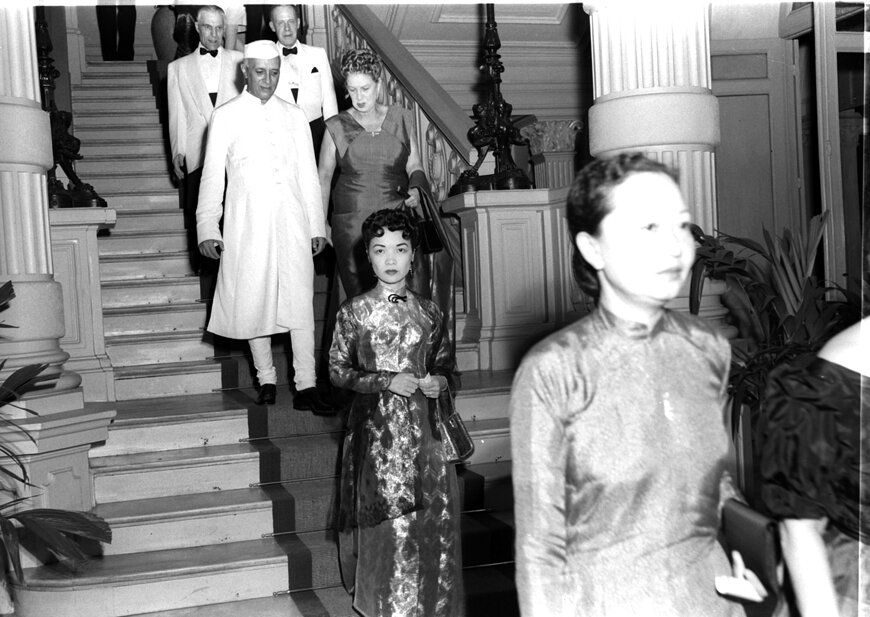

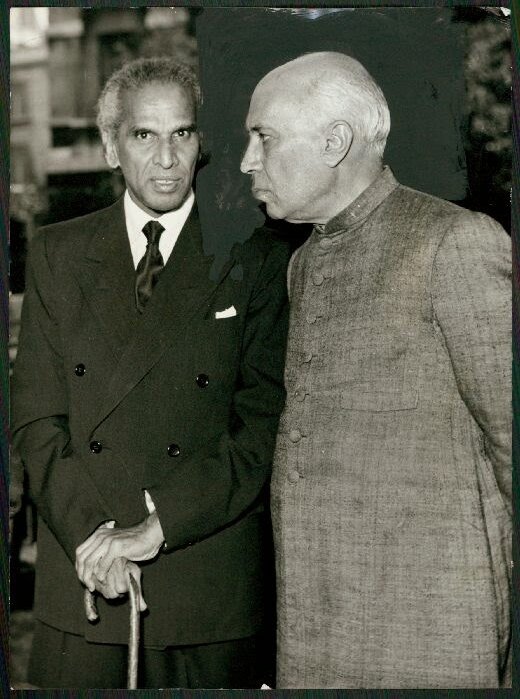






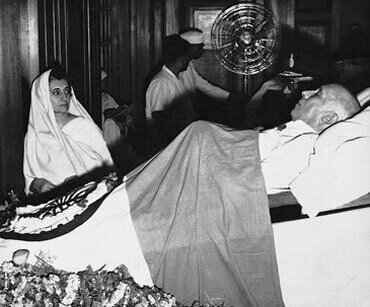

Published: June 11th, 2024
Author: Angkor Database
Source: ADB online research
The Visit
We are still trying to find out more details about Nehru’s October 1954 visit to Phnom Penh and Angkor. The one of Pandit Nehru sitting on a Banteay Srei doorway, merchandized by Getty Images, is particularly intriguing as the subject is obviously posing for the photographer, who took a really crisp photograph. Was Henri Cartier-Bresson (see below) accompanying Nehru during his Cambodian visit? email hidden; JavaScript is required.
What is really remarkable about these newsreel photos of Nerhu’s tour to China, Vietnam, Laos and Cambodia. is how accurately they reflect the Indian leader mood: awed and outgoing in China, obviously worried in Saigon (he had no sympathy for the South Vietnamese régime), completely at ease — with more than a hint of admiration — with Ho Chi Minh, contemplative and benevolent in Cambodia (we’re still looking for email hidden; JavaScript is required).
Pandit Nehru and photographers
India is photogenic, and its first leader was, too. His genuine attention to details (the roses on his lap jacket) informs that, and also the fact he was an inspiration for emergin talented photographers in India. Among them, let’s focus on:
Homai Vyarawalla (9 Dec. 1913, Navsari, Gujarat, India — 15 Jan. 2012, Vadodara, Gujarat), artist’s name Dalda 13, was India’s first woman photojournalist. Hailing from a Parsi Zoroastrian family, she started shooting phototgraphs a early as 1938. She consistenly photographed Pandit Nehru from his early days to his funeral in Delhi, 1964. Most of her work is kept at Alkazi Foundation, Delhi, India. Read also: “Homai Vyarawalla: The trailblazer who became India’s first woman photojournalist”, BBC News, Dec. 2017.

Homai Vyarawalla (1913−2012) Kulwant Roy (1914, Village Bagli Kalan, District Ludhiana, Punjab, British India – 1984) was an Indian photographer.Founder of the “Associated Press Photographs” agency, he captured some memorable images of the the Indian independence movement and the early years of the Republic of India. In Aughust 2017, The Indian Express published some rare photos of Jawaharlal Nehru from the archives of photojournalist Kulwant Roy, documented by Aditya Arya in the visual archive History in the Making.

Nehru, center, in one of many photographs from Kulwant Roy’s archive. (The Indian Express) Twin sisters Manobina Roy and Debalina Mazumdar (b. 1919, Benares, British India) , became photo experts after their father, Binod Behari Sen Roy, a headmaster, employed by the Maharaja of Benares and a member of the Royal Photographic Society, gifted them an Agfa Brownie box camera on the condition that they would process their films and make their own prints. They became famous for their photography of Nehru and Indira Gandhi on a ferris wheel in the 1930s.

Twin sisters Manobina and Debalina in the 1940s (The Times of India) Henri Cartier-Bresson (22 Aug. 1908, Chanteloup en Brie, France — 3 Aug. 2004, Céreste, France ) was a French humanist photographe, co-founder of Magnum photo agency, and a master of candid photography as an early user of 35mm film. His photograph of Jawaharlal Nehru and Edwina Mountbatten sharing a private joke at Government House in Delhi (now Rashtrapati Bhavan) is an iconic testimony of India’s accession to independence in 1947. Earlier, he had taken some fourteen photos of Mahatma Gandhi a few hours before his assassination. According to Paroma Mukherjee in a 2017 post on a Mint Lounge blog, his particular connexion to India came from his then wife, Ratna Mohini, who “was a friend of Dorothy Norman, an American writer, photographer and editor committed to gathering support in the US for India’s freedom struggle. Norman, in turn, was close to Nehru’s youngest sister, Krishna Hutheesing, and that is how Cartier-Bresson found himself in the middle of India’s political transition.” From 1947 to 1966, Cartier-Bresson visited India six times.

In December 2017, several photographs taken in India by Henri Cartier-Bresson were auctioned in New York. Among them, above: Festivities for the 39th Birthday of the Maharajah (The diamonds once belonged to Napoleon), Gujarat, Baroda (Vadodara), India, 1948. Image: Copyright Henri Cartier-Bresson/Magnum Photos
Legacy and Controversy
In 2019 – 2020, a flurry of social media posts used J.L Nehru’s posts to bash the former Prime Minister, calling him a “womaniser”. Citizens were prompt to set the matter up, proving that female subjects on Nehru’s photos were just relatives. The one photograph we added to this gallery, by Homai Vyarawala, shows Nehru lighting up a cigarette for an elegant lady in an airplane cabin. No “womanizing” here, just sitting by the British High Commissioner’s wife on the first direct flight Delhi-London…
Note: Photo NEHRU14 is from B.R. Nanda’s Gandhi, A Pictorial Biography, Prabhat Prakashan, 2015.
Tags: India, India-Cambodia cultural ties, 1950s, Modern Cambodia, diplomacy, Indian photographers, Vietnam War, King Sihanouk
About the Photographer

Angkor Database
Angkor Database — មូលដ្ឋានទិន្នន័យអង្គរ — 吴哥数据库
All you want to know about Angkor and the Ancient Khmer civilization, how it keeps attracting worldwide attention and permeates modern Cambodia.
Indexed and reviewed books, online documentation, photo and film collections, enriched authors’ biographies, searchable publications.
ជាអ្វីគ្រប់យ៉ាងដែលអ្នកទាំងអស់គ្នាចង់ដឹងអំពីអង្គរ, អរិយធម៌ខ្មែរពីបុរាណ, និងមូលហេតុអ្វីដែលធ្វើឲ្យមានការទាក់ទាញចាប់អារម្មណ៍ពីទូទាំងពិភពលោកបូករួមទាំងប្រទេសកម្ពុជានាសម័យឥឡូវនេះផងដែរ។
Our resources include the on-site Library at Templation Angkor Resort, Siem Reap, Cambodia, with exclusive access for the resort’s guests. Non-staying visitors can ask for a daily pass email hidden; JavaScript is required.




